Two days ago a neighbor agreed to loan us eight acres of unused pasture for a watermelon landrace breeding project.
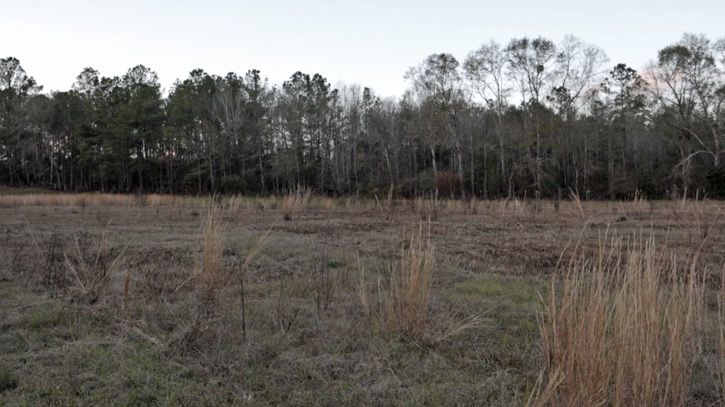
My son Ezekiel has been growing watermelons for about five years now, and recently read Joseph Lofthouse’s book Landrace Gardening.
Ezekiel’s 2021 patch of watermelons contained multiple varieties, including Crimson Sweet, Moon and Stars, Orangeglo, Garden Leader Monster, Carolina Cross, Sugar Baby, Congo and more. It was a rough year, with alternating cold, drought, heat, and bouts of torrential rain. Many of the plants failed, but some did very well. He saved seeds from the best survivors to replant in 2022.
This year he will plant those, along with multiple new varieties, and allow them to interbreed.
Yesterday afternoon we filmed this video together:
Then, yesterday evening, we bought more seeds for the project, including these from Southern Exposure Seed Exchange:
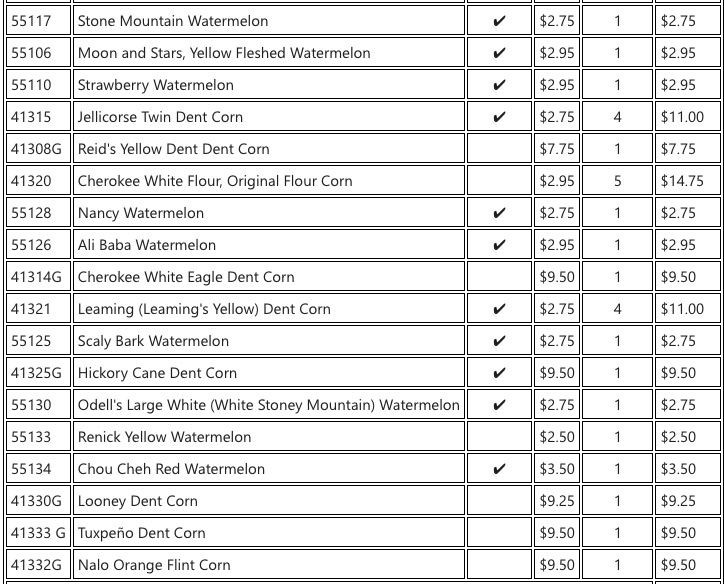
And these from Baker Creek Seeds:
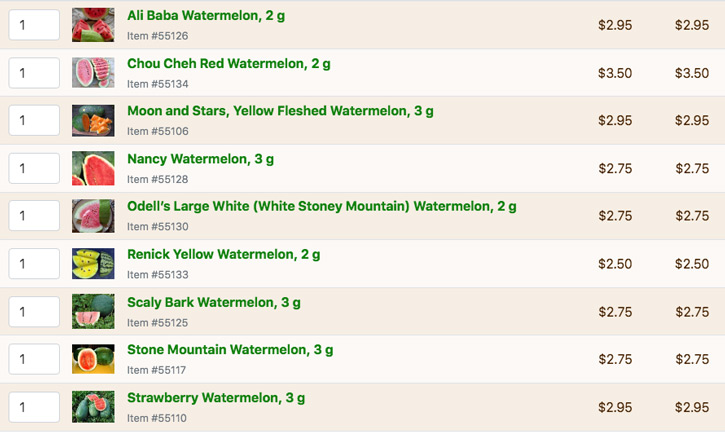
In spring, Ezekiel and I will plant all these varieties together with the seeds from the 2021 patch and allow them to interbreed, and may the best melons win.
After a few years of crossing melons, we should have a hearty landrace variety that can handle our weather, bugs, poor soil, heat and humidity. We’re already one year in, thanks to Ezekiel’s 2021 garden.
Last year I grow a good mix of pumpkins and am on the way to making a landrace of C. moschata types and a second landrace of C. maximas. The moschatas are based heavily on Seminole pumpkins, and the maximas come from a Walmart pumpkin I bought at the end of 2020. We saved the seeds and grew them in our 2021 garden, discovering that the pumpkin must have been a cross, as there were a wide range of types that came from that one grey-green pumpkin.
Finally, I grew a patch of Hickory King corn this year. It did okay, but not awesome, and the productivity was so-so. Some of those seeds were saved, and I will be mixing them up with a variety of different corns to make a landrace for this area. You’ll see some corn in my purchase from Southern Exposure Seed Exchange. All of those will get mixed together and we’ll see what we get.
With all the space we’ve just acquired, we have a lot of room to plant. I am tempted to not bother irrigating or fertilizing or even liming, and just to till and plant and let the strongest survive, as Lofthouse does. Maybe an acre of melons, an acre of corn, an acre of moschatas and an acre of maximas. Those that produce, produce – and get to go on to round two. Those that die, die.
I like this method of gardening much more than trying to keep seed lines separate and pure. May the best genetics win!
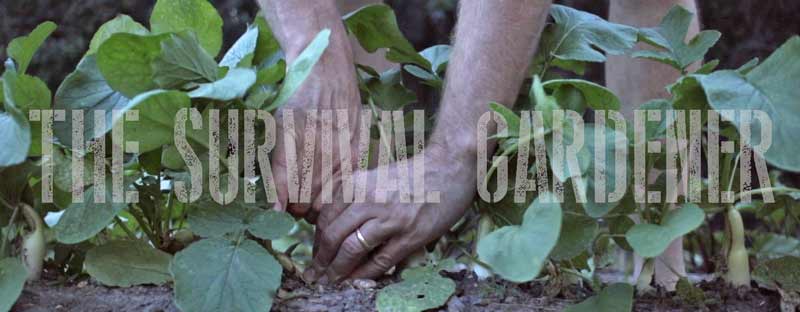
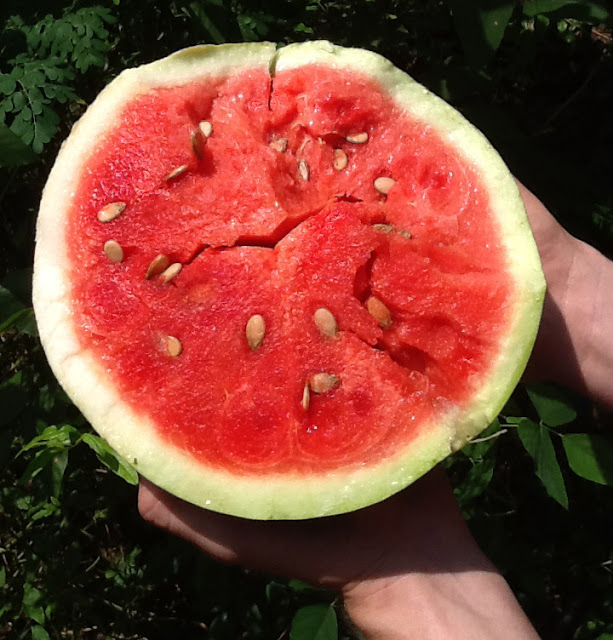

7 comments
Scaley Bark Watermelon are really neat looking, so it’s on my to-buy list. Y’all must have thought so too since you bought it twice.
Yeah, we had a problem with splitting, so it’s in the mix. Harder rinds would be good.
I’ll be following this with interest. A landrace watermelon and landrace winter squash adapted to the Deep South sound fantastic.
Have you thought about whether you might sell or share/trade the seeds from your landrace at some point in the future?
Yes, we’ll probably share the seeds in the future.
So are you going to duplicate this at your new house?
By the way, I had a thought about the idea of landrace planting. What you’re basically doing is UNDOING decades of selective breeding and re-combining or re-introducing characteristics into the DNA that had been eliminated. It is definitely interesting, but it seems to me like it’s just backing the airplane industry up 70 years and saying “let’s start developing jet engines from scratch again”. Why not just plant 20 different varieties of watermelons, keep them isolated, and figure out which ones do the best in your area? Doesn’t that accomplish the same thing, while preserving the qualities of the DNA-diminished-selectively-bred better-quality watermelons?
Just some thoughts.
No, we can do better than that. It’s actually recombining genes from all over, and breeding for survival first. See, all those seedlines from various places were bred in climates other than ours. I used to think like that: just find the heirloom that does best. But this is an upgrade, because we are really growing something to adapt directly to our climate, rather than hoping for a close fit. We’ve planted a patch this year.
Hello father and son,
Joseph Lofthouse is unique in this day in age only because we have grown so accustomed to “dividing and conquering” ( so to speak) in the modern worlds that we live. Growing melons like Moon and Stars or Desert King is not a limitation in itself but rather a fascination with character and consistency. When your plant the seeds of a “homogenous” variety you are pretty assured of getting the same delight. Now in many cases these were selections originally from landraces. I see endless fun in throwing together vastly different selections and am all for doing so. The keen eye of humans has been preferential in selecting out particular traits since times long passed. Recently I myself was on a ” wild goose chase” of sorts …in Botswana and Zimbabwe buying up watermelons along my wanderings, taking photos and notes and eating and saving the seeds! What landrace treasures I found and what genetic gems! Among things that dawned on me… Less groomed (I’ll just call them more fecund) melons) are chuck full of seeds..as we sat at the breakfast and dinner tables eating seedy melons a provocative thought hit me…eating seedy melons is a pastime invitation, a time to savor and reflect,; a time to slow down and enjoy! I’ve got those seeds and would be happy to share and a whole lot more …hundreds iof varieties!
Hope we can speak soon ..look me up if you will!
Best
Joseph Simcox